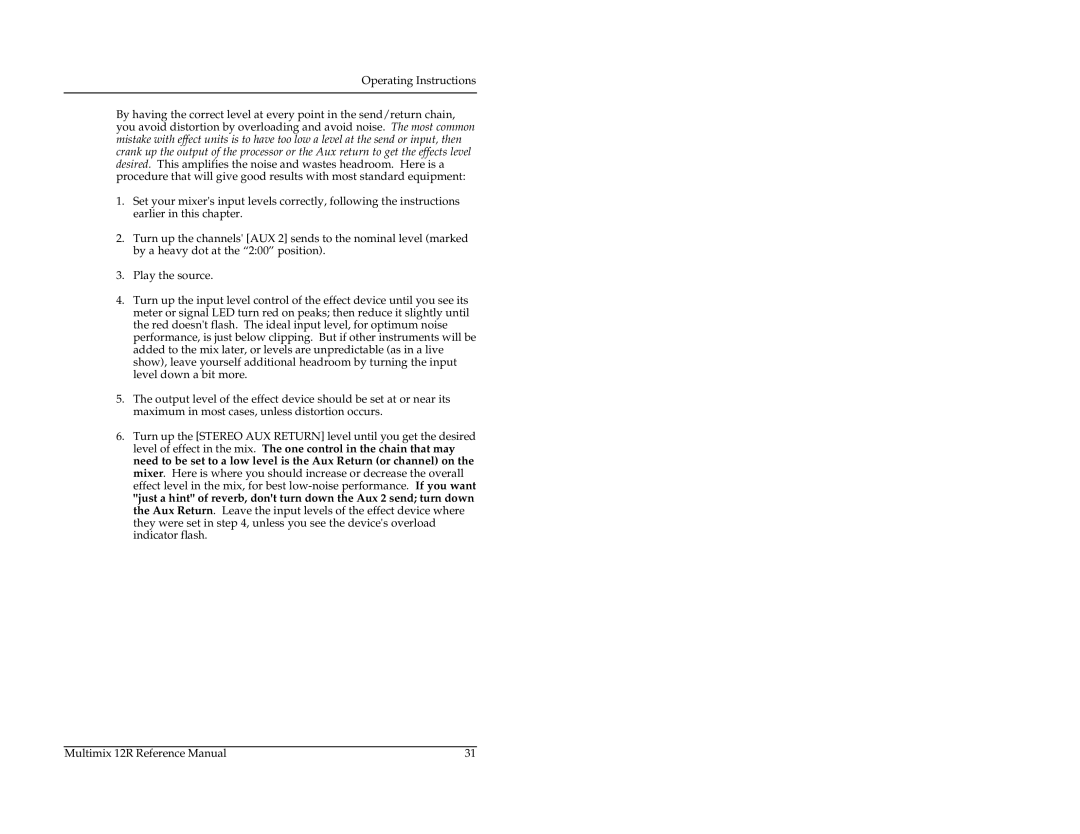Operating Instructions
By having the correct level at every point in the send/return chain, you avoid distortion by overloading and avoid noise. The most common mistake with effect units is to have too low a level at the send or input, then crank up the output of the processor or the Aux return to get the effects level desired. This amplifies the noise and wastes headroom. Here is a procedure that will give good results with most standard equipment:
1.Set your mixer's input levels correctly, following the instructions earlier in this chapter.
2.Turn up the channels' [AUX 2] sends to the nominal level (marked by a heavy dot at the “2:00” position).
3.Play the source.
4.Turn up the input level control of the effect device until you see its meter or signal LED turn red on peaks; then reduce it slightly until the red doesn't flash. The ideal input level, for optimum noise performance, is just below clipping. But if other instruments will be added to the mix later, or levels are unpredictable (as in a live show), leave yourself additional headroom by turning the input level down a bit more.
5.The output level of the effect device should be set at or near its maximum in most cases, unless distortion occurs.
6.Turn up the [STEREO AUX RETURN] level until you get the desired level of effect in the mix. The one control in the chain that may need to be set to a low level is the Aux Return (or channel) on the mixer. Here is where you should increase or decrease the overall effect level in the mix, for best
Multimix 12R Reference Manual | 31 |
